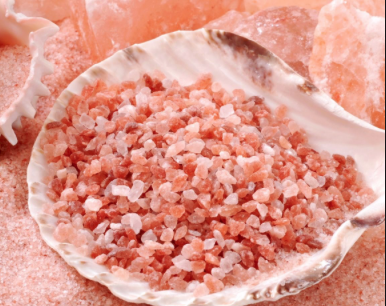Salty is one of the six tastes in Ayurveda, best known for the way salt enhances the flavor of just about everything we sit down to eat. Just a pinch of salt is all it takes to bring out the other five flavors, and make our taste buds respond with a pleasure and intrigue. Authentic salty taste—not manmade table salt, is full of essential minerals and electrolytes that our bodies need to stay strong, hydrated, and balanced.
Salt has a preserving quality to it, so when we eat it in appropriate amounts, it can help preserve and maintain our structural integrity. The main attributes of a salty taste are: heavy, oily, and hot.
Some examples of salty-tasting foods are: sea salt, Himalayan rock salt, seaweeds, tamari, soy sauces, sesame salt (gomasio), fish, miso, cottage cheese, and Irish moss.
For the doshas, salty taste aggravates Pitta and Kapha, and balances Vata; that’s because it’s already comprised of Fire (Pitta) and Water (Kapha) elements. That means, adding a little extra salt for Vata-dominant people can be really grounding and important to keep them in balance. Too much salt, even just a little too much, can quickly become agitating for those with Pitta and/or Kapha dominant constitutions.
Salty taste primarily impacts the Kidneys and Bladder and affects 5 out of the 7 dhatus or tissues in the body—plasma (rasa), blood (rakta), muscle (mamsa), fat (meda), nerves (majja). (tissues).
Emotionally, salty taste can give us confidence and courage, energy and a sense of being poised or well balanced. It can make us feel curious and interested in learning new things and engaging with our life in general. It can inspire us to intellectually probe, question, and reflect; which makes it an important taste (in moderation/in an appropriate amount) when we’re studying, writing, or are involved in mentally taxing work.
Physically, salty taste strengthens our muscles, and supports detoxification and elimination from our intestines. There’s actually a yogic cleansing practice known as Shankaprakshalana that involves salt water, which can be really helpful for some people with certain ailments (we won’t go into detail, because this is a practice that absolutely must be done with guidance from a trained professional).
Salty taste helps break up hard masses in the body (also needs to be used under the guidance of a trained professional for this purpose), can help alleviate flatulence, contains essential minerals and electrolytes that our bodies need in order to stay balanced. Salty taste also moistens and softens the internal organs and tissues, and helps our intestines with the absorption of nutrients.
Too much salty-tasting foods can make us feel dull and depressed, greedy and possessive, irritable and constricted. It can lead to water retention and swelling, hyperacidity, bleeding disorders, ulcers, fainting, wrinkles, hair loss, and vomiting.
In Ayurveda, we are encouraged to eat small amounts of salt with our food because it brings us grounding and a pleasurable sensation when we eat—helping soothe and balance our bodies and minds. It’s suggested that we primarily use rock salt and not sea salt or table salt in our diet. As with everything in Ayurveda though, what we need personally isn’t going to look the same as everyone else. Each of us has a unique physical composition and it’s important that we understand our bodies and our needs in an intimate way. You can schedule a consultation with us on our website to learn more about your own constitution and needs. We prefer in-person consultations, but if you happen to live outside of Santa Cruz, we can also do them online. We’re here to answer your questions and support you on your wellness journey!
Sources:
“Ayurvedic Tongue Diagnosis,” by Walter Shantree Kacera, 2006.
